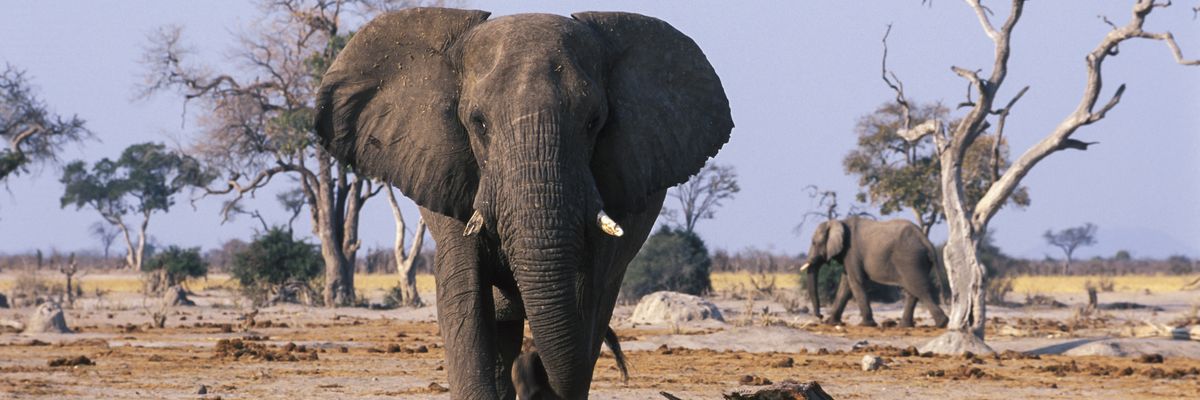The image of international conservation organizations is that of teams of well-meaning people—some groups better off than others—struggling against the odds to make the world a better place for nature.
This image took a beating a few years ago from
reporting by investigative journalists working for Buzzfeed News. Most supporters of conservation organizations were presumably shocked by the evidence that a couple of large NGOs had been supporting ranger operations engaged in human right abuses. The information led to a congressional hearing, and those organizations losing some U.S. government funding.
There’s ongoing debate on the appropriateness of militarized conservation programs, with these abuses being particularly egregious examples. Most militarized conservation programs tend to be the equivalent of infantry patrols, with rangers rightly described as
“the foot soldiers” of conservation. Another aspect of military operations that has also found its way into conservation programs is intelligence collection, exemplified by “Project tenBoma” a program of the International Fund for Animal Welfare (IFAW) that ran from 2015 to 2020. At its launch, this program was described by Azzedine Downes, the president and CEO of IFAW: “We are using the same techniques that were used by military intelligence units to prevent terror attacks in Afghanistan and Iraq to predict and prevent poaching.”
Embedding intelligence officers in conservation organizations creates risks for conservationists.
The aim of the project was to develop
an intelligence fusion center to combat wildlife crime. But Project tenBoma did more than just use techniques from U.S. military intelligence. While instances of Western intelligence officers using humanitarian NGOs as covert cover have been reported, Project tenBoma was overt, led by a lieutenant colonel in the U.S. Air Force Reserve. This much was made clear in the many, high-profile media reports of the officer’s move into elephant conservation. However, none of these reports convey the impression that this was a short-term deployment. The officer, while employed as a senior vice president at IFAW, was also still serving in the U.S. Air Force Reserve. From the officer's LinkedIn page, her military postings while at IFAW were, initially, chief of ISR (Intelligence, Surveillance, and Reconnaissance) Operations for Special Operations Command Africa (SOCAFRICA), then Africa regional strategy officer for the Joint Staff at the Pentagon. She left IFAW in mid-2019, and resumed her post with SOCAFRICA where she is now deputy chief of staff.
There appears to be complete overlap between the lieutenant colonel’s military duties and her employment at IFAW while working on Project tenBoma. This is, obviously, left out of all the program’s glowing media coverage.
Deutsche Welle’s report specifically, and inappropriately, described her military service using the past tense. None of these media outlets have followed up with reporting on the lieutenant colonel’s move back to SOCAFRICA.
As
detailed elsewhere, Project tenBoma’s establishment followed concerns expressed by the U.S. national security community that poaching ivory, the “White Gold of Jihad,” was funding terrorism. (It was not.) In early 2014, the Obama White House announced a “National Strategy for Combating Wildlife Trafficking” in which “some terrorist entities” were identified as engaged in the trade of wildlife products. The National Strategy called for a whole-of-government approach to addressing the issue. IFAW announced the launch of Project tenBoma about 12 months later.
Another overlooked aspect of this overlooked story is that there are reports of
human rights abuses by rangers of the Kenya Wildlife Service (KWS), taking place in the area where Project tenBoma was run, at the time the project was running. Previous reporting has described allegations of human rights abuses by some KWS rangers elsewhere. IFAW’s work in the region where Project tenBoma operated included funding from USAID, so if there is any possibility of Leahy Law violations they could be investigated.
The program was also supported by funding from the
Tui Care Foundation and the European Union. Whether either of these organizations (or, for that matter, IFAW’s many individual donors) were aware that they were supporting the activities of a military intelligence program in the name of conservation is unknown. Given the E.U.’s Charter of Fundamental Rights, and commitment to a rights-based approach to development activities, presumably any possible risk that human rights abuses occurred at the same time and place as Project tenBoma would be of interest.
Embedding intelligence officers in conservation organizations creates
risks for conservationists. The CIA’s use of a hepatitis vaccination program as a cover in the manhunt for Osama bin Laden led to the deaths of aid workers, demonstrating the severity of these risks. As well, the militarization of engagement by the U.S. in Africa has corresponded with greatly increased violence from terrorism and political unrest recently. If anything is contributing to the problems with terrorism is Africa, it’s the U.S. reliance on military activity as the solution of choice.
To return to that statement by IFAW’s CEO when Project tenBoma began, perhaps the lesson to take from the U.S. experience of Afghanistan and Iraq is that reliance on militarized approaches is not always the most appropriate option.
